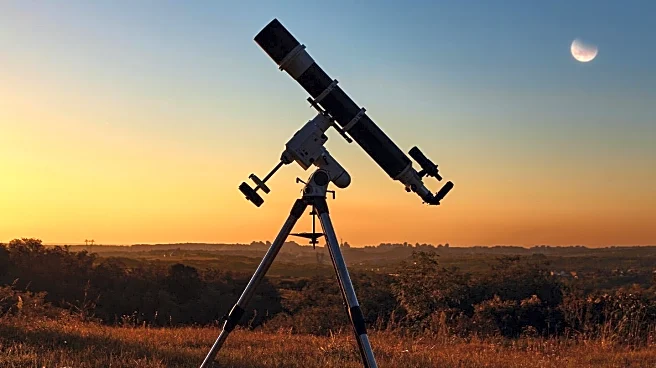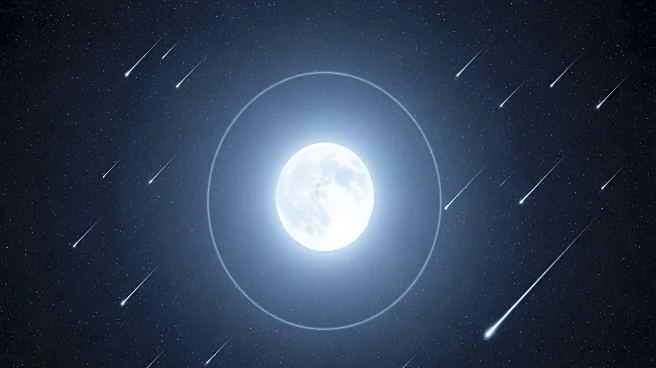What's Happening?
Dwarf planet Ceres is making an appulse, passing close to a background star in the constellation Cetus. This event makes Ceres easy to locate and observe, as it is positioned near several bright stars.
Ceres is currently at its highest observation point, approximately 40° above the southern horizon, around 9 P.M. local time. Observers can use Saturn and Iota Ceti as reference points to locate Ceres, which is situated about 3.5° southeast of Iota Ceti. The Moon is in a waning gibbous phase, providing favorable conditions for skywatching.
Why It's Important?
The appulse of Ceres offers a unique opportunity for astronomers and enthusiasts to observe the dwarf planet's motion against the backdrop of the Cetus constellation. This event highlights the dynamic nature of celestial objects and their interactions with background stars. Observing Ceres can provide insights into its trajectory and characteristics, contributing to the broader understanding of dwarf planets within our solar system. The event also encourages public interest in astronomy, as it is accessible to amateur astronomers using binoculars or small telescopes.
What's Next?
As Ceres continues its path through Cetus, observers can track its movement over the coming days. The event serves as a precursor to other celestial phenomena, such as the upcoming visibility of Comet Lemmon. Enthusiasts are encouraged to continue observing the night sky, as November offers several notable astronomical events, including the Leonids Meteor Shower and Uranus at opposition.
Beyond the Headlines
The observation of Ceres in Cetus may inspire further study of dwarf planets and their role in the solar system. It underscores the importance of celestial navigation and the use of constellations as reference points for locating and studying distant objects. This event also highlights the interconnectedness of celestial bodies and their influence on observational astronomy.












